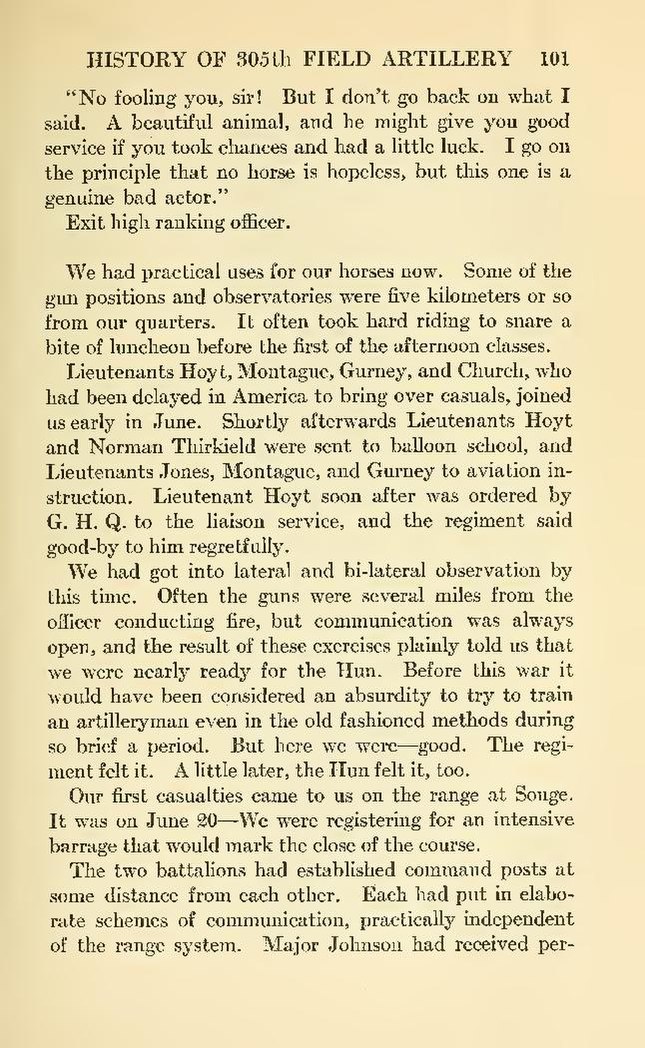"No fooling you, sir! But I don't go back on what I
said. A beautiful animal, and he might give you good
service if you took chances and had a little luck. I go on
the principle that no horse is hopeless, but this one is a
genuine bad actor."
Exit high ranking officer.
We had practical uses for our horses now. Some of the gun positions and observatories were five kilometers or so from our quarters. It often took hard riding to snare a bite of luncheon before the first of the afternoon classes. Lieutenants Hoyt, Montague, Gurney, and Church, who had been delayed in America to bring over casuals, joined us early in June. Shortly afterwards Lieutenants Hoyt and Norman Thirkield were sent to balloon school, and Lieutenants Jones, Montague, and Gurney to aviation instruction. Lieutenant Hoyt soon after was ordered by G. H. Q. to the liaison service, and the regiment said good-by to him regretfully.
We had got into lateral and bi-lateral observation by this time. Often the guns were several miles from the officer conducting fire, but communication was always open, and the result of these exercises plainly told us that we were nearly ready for the fun. Before this war it would have been considered an absurdity to try to train an artilleryman even in the old fashioned methods during so brief a period. But here we were good. The regiment felt it. A little later, the TIun felt it, too.
Our first casualties came to us on the range at Souge. It was on June 20—We were registering for an intensive barrage that would mark the close of the course.
The two battalions had established command posts at some distance from each other. Each had put in elaborate schemes of communication, practically independent of the range system. Major Johnson had received per-
